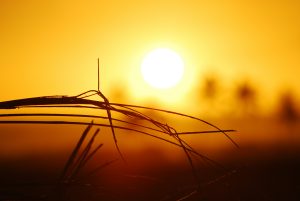Autoimmune Disease
Acupuncture for Stomach Pain

We have all experienced stomach pain. Either we ate something wrong, a medication we took had side effects, it might related to one’s menstrual cycle, and/or be simply chronic digestive issues that have some genetic component. How do we treat this with acupuncture and Chinese medicine?
First, per usual, we must identify the correct pattern.
If someone suffers from chronic constipation and bloating, we can assume the pattern is one of “food stagnation,” which can be corroborated by a dense sensation in the middle finger position of the right radial artery—also by palpating the epigastric region for tenderness. These patients tend to feel overheated, they might experience excessive thirst, insomnia, or irritability, all as a result of the intestinal inflammation. Whether or not there is distention alters the diagnosis.
We can needle points along the stomach and large intestine vessels to move gases out and downward. Depending on the rest of the pattern, we might also use the pancreas or even lung vessels to transfer mitochondria to the former organ vessels, the way one might money from their savings to their checking account, as needed. Herbal formulas indicated tend to revolve around rhubarb root, possibly lily-turf, gypsum stone, or white peony, the latter of which can be especially adept at treating all forms of cramping in the body.
From a western medical perspective, these are patients who might benefit from intermittent fasting and/or a magnesium supplement.
More commonly, stomach pain has to do with our blood. Either it is not moving or not arriving to the local area, leaving the smooth muscles of the organs dehydrated, sent into spasm in search of fluids, but we experience it as, Ouch. My tummy hurts.
In a pattern of “blood stagnation,” acupuncture works exceptionally well. We can use points along the pancreatic or liver vessels to encourage healthy blood movement. We might also use local points around the abdomen—where everyone always wants us to put it—to encourage local vasodilation and the dissolution of amenable masses. Useful herbal families might revolve again around white peony or rhubarb, but also apricot kernel, corydalis, or safflower. Generally, the veins beneath the patient’s tongue will be distended and purple enough to corroborate diagnosis.
Lastly, is blood deficiency, which might be slightly less amenable to acupuncture—more so to moxibustion, herbal medicine, the consumption of red meat, and healthy sleep hygiene. Moxibustion is often more effective at generating mitochondria and healthy fluids than acupuncture. Herbs we might consider are rehmannia, angelica, or even red dates, the latter of which has the added benefit to settle heart palpitations and anxiety.
Since 2 of the 3 physiological patterns for stomach pain pertain to the blood, it is quite common to be menstrual and/or hormonal related. Some patients for whom it is impractical to come every single week can benefit from coming at least just twice a month, the week before and after their cycle begins.
Tom Brady & Nightshade Vegetables

If he isn’t universally considered the greatest football player of all time, he’s at least objectively the most successful. Supposedly, one of Tom Brady’s secrets to success was an extremely strict diet, which was about 80% plant-based, organic, paleolithic, with abstinence from sugar, alcohol, soy, condiments, frozen foods, gluten, and nightshade vegetables.
Nightshade vegetables include white potatoes, tomatoes, eggplants, and bell peppers, and although all of these contain nutrients, they also contain a compound called solanine, a natural pesticide that can be toxic in high concentrations. People with irritable bowel, autoimmune, and/or arthritic conditions can be more vulnerable to solanine’s adverse effects—in Chinese medical terms, it creates dampness, or inflammation in the gut, which gets sent “outwards” to our joints. As someone who has battled gout disease off and on for twenty years, I’ve recently decided to experiment with nightshade abstinence. When it comes to self-experimentation, I generally recommend and adhere to the rule of the life cycle of a red blood cell, which is 120 days, or about four months, so I’ll let you know how things are when I reach the finish line.
Potatoes are an easy workaround, since sweet potatoes are safe, not to mention healthier overall, and delicious. I’ll miss French fries, but I’m an adult, and let’s be honest, they’re probably one of the worst things we can possibly eat. Eggplant and peppers are generally easy to avoid, but tomatoes will be tough. I love sauce and meatballs, not to mention a good caprese salad as we approach the season, however I do not love any of these things as much as I do my internal organs. Potential workarounds in said Italian realm are sauceless meatballs (+olive oil), pesto sauces, or garlic and oil primaveras, the latter of which sans peppers of course.
In playing with diet, I’ve found the same benefit I once did when imposing creative restrictions on myself as a comedian many years ago. For example, at one point I chose to not do or write any jokes about race anymore, simply because they’d become so ubiquitous and hacky on the circuit. I got so bored of hearing them that I couldn’t bring myself to perpetuate the problem, no matter how unique I thought a particular idea of mine was. By “censoring” myself in this way I think I became a superior writer, forced to think harder and write more imaginatively. Similarly, when we omit certain foods from our diet, we might be forced to broaden our horizons (just use Google!), expand our minds and at-home menus, and probably discover new foods that we love, and more importantly love us in return.
If you suffer from any chronic joint pain, autoimmune, or intestinal condition I would invite you to join in my self-experiment and see how your body feels. You/we don’t have to commit to forever. Just four months to intelligently reassess. If you prefer to wait until after tomato season you can enjoy throughout the summer, begin after Labor Day, and resume nightshade indulgences again for the winter holidays. As humans go, it seems the second most common time of year to clean up our acts after New Year’s is the end of summer, in the wake of vacations, ballgames, beers, and barbeques.
None of us can become Tom Brady on the football field, but it would be nice if our internal organs and systems could be as close as possible to the Tom Brady’s of our bodies. As we weaken with age, I believe the most logical antidote is strength in discipline, in hopes of maximizing physical freedom through restrictions or subtraction. Less is more, as they say, a fine maxim to default to under the spell of American food.
These Longest Days of the Year

Welcome to the Tai Yang time of year. Say that three times fast, and maybe add “Thank You,” to complete the trifecta, TYTYTY! “Tai Yang” means the most yang, as we enter the longest days of the year, leading up to the summer solstice next week, at which time days will begin to very gradually, grow shorter.
Until that time we might be more vulnerable to “yang pathogens,” exemplified by inflammatory heat and/or “external invasions,” which is probably why we see a minor uptick in Covid cases around this time each year, despite the warm weather which should mitigate such spread. More common are the former, symptoms of “heat rising,” a la insomnia, anxiety, palpitations, acid reflux, constipation, headaches, and ANGER!!! If you’ve noticed an exacerbation in any such signs within yourself, rest assured, it is normal for the time of year and relatively wane after June 21st. If it doesn’t, see a doctor, and/or myself.
Some of the things we can do to cool excessive yang rising include green tea in the mornings (after breakfast), then peppermint or chrysanthemum teas at night, snacking on watermelon, cucumbers, and celery, and minimizing spicy foods and alcohol. Most importantly, sweat!
In Chinese medicine we treat most “Tai Yang disease,” or viral pathogens through moderate sweating—underscore moderate for you high intensity athletes—and as the weather now is increasingly humid to begin with, it is important to sweat, just a bit every day.
The Tai Yang time of day is mid-day, around noon, which makes that window optimum for exercise—although as I often advise my busy patients, the truly best time to exercise is whenever you have time. ‘Tis better to do imperfectly than not do at all.
Although I am admittedly a slave to air conditioning for sleep, it is obviously manmade, unnatural, and ultimately not physiologically (or environmentally) beneficial. In the humid climate of summer, the contrived cold air traps pathogenic fluids at the exterior, or “Tai Yang layer” of the body, thereby exacerbating local inflammation, often inducing skin/joint conditions, and compromising immune function. I recommend using it as minimally as possible and/or wearing a scarf or long-sleeves while in offices or public transportation that insist on killing us slowly. And spend as much time outdoors as possible. We are all too deprived of it these days.
Happy Father’s Day!
Using Acupuncture to Manage Autoimmune Diseases

Autoimmune diseases can prove to be intricate and seemingly unsolvable puzzles for many people. And statistics prove this to be true as millions worldwide are impacted by autoimmune diseases ranging from rheumatoid arthritis to lupus, Crohn’s disease, multiple sclerosis, irritable bowel disease, and even Parkinson’s disease. Conventional medicine can diagnose 100 different autoimmune conditions, however the treatments offered don’t completely resolve the issues associated with the disease and in extreme cases, no treatment is available at all. And yet, in the midst of all these medical challenges that autoimmune diseases present, acupuncture emerges as a promising ally, offering relief to those grappling with these often-complex health conditions. continue reading


